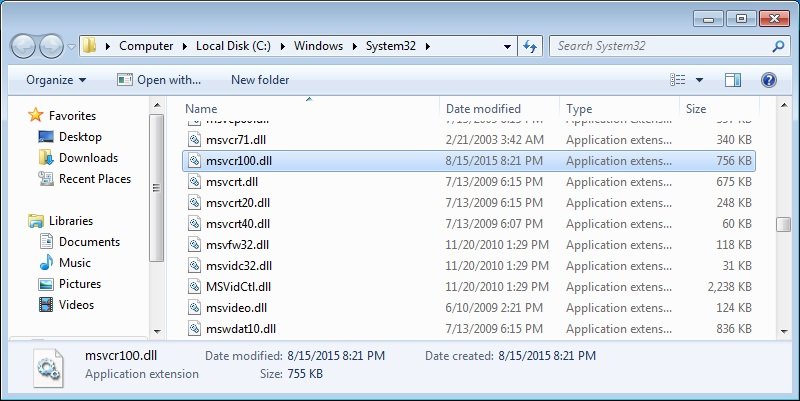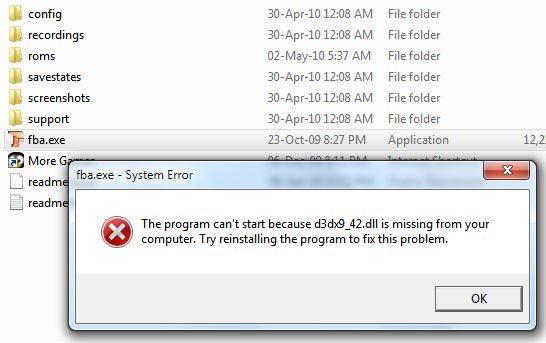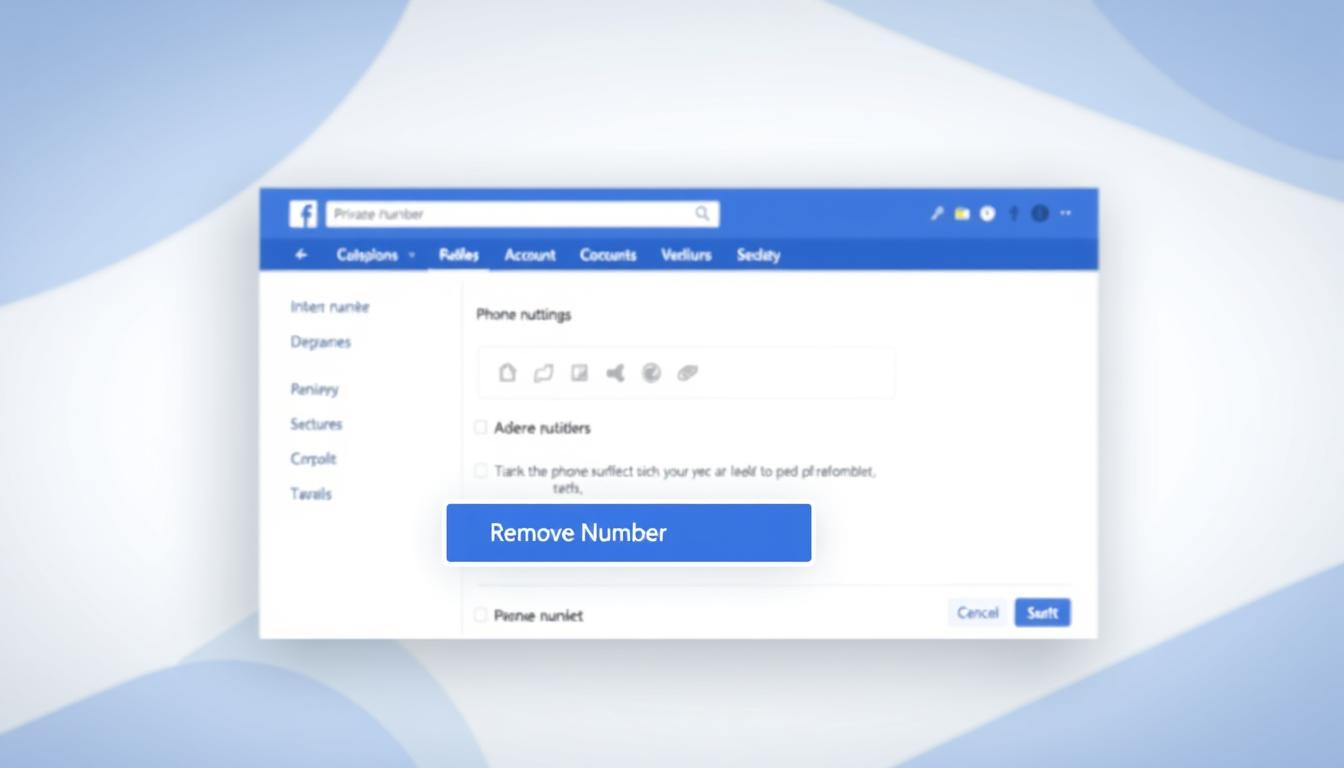FTC disclaimer: This post contains affiliate links and I will be compensated if you make a purchase after clicking on my link.
You would have seen the DLL file when you have gone through program files or received a pop-up error message from any application like “Missing DLL file.”
The DLL file is the most critical and essential file in Windows that is needed to run most of the applications.
But, before moving into a little bit deeper, let’s learn what DLL file and its importance is.
What is DLL?
DLL is termed as Dynamic Link Library, which is a file format that holds multiple codes, data, resources, and procedures to run a Windows program or application.
DLL files are created to assist multiple programs to run at once, which aids memory conservation.
It is also used to edit multiple applications at once without changing the application.
What does a DLL file contain?
A DLL file contains functions, classes, strings, objects, variables, UIs, and resources such as icons, files, images for the EXE file, and other DLL file uses.
Why are DLL files important?
DLL files are required by most of the application to start the process. It is needed when the application starts, and if it is not found in the system, then it will stop the process.
How is the DLL file different from the EXE file?
DLL file shares the same file format of an executable file (EXE). Also, both DLL and EXE files can contain the same multiple codes, data, and resources. But both files are also different in many ways.
DLL file cannot be executed
DLL file cannot be executed like an EXE file, which means that when you double click on the EXE file, it started to run, but the same is not possible with the DLL file.
One DLL file can share with other DLL files.
DLL files can be accessed by multiple programs at the same time. Moreover, you can also link various DLL files into one DLL file, and it can be called to run all the files at the same time instead of calling separately.
For instance, if a particular application has multiple modules and each module to be linked together to run an application, then here the Windows DLL file is used so that each module can interact with each other.
Where are DLL files located in Windows 10?
You will find most of the DLL files in C:\windows\system32 folder.
For example, you will find Common Dialog Box Library as comdlg32.dll, which contains multiple codes and data that require to build up and give shape and look to the dialog box.
This dialog box library can be called by multiple applications to give a look and feel to the dialog box.
The other program, like Control Panel files, device drivers, and ActiveX controls of Windows also uses a Dynamic Link Library (DLL) file.
What are the advantages of using DLL files?
DLL files are loaded at run time rather than compile files, which means it is independent of an executable file (EXE) and can be edited or updated at any time.
For instance, the Windows dialog box look and feel can be changed any time without editing or rewriting the application.
Because it is independent of an executable file (EXE), it can be shared with multiple executable files. Which, in turn, saves lots of memory, in case if you are running 100 of the application with a single DLL file.
It also helps developers not to write the same code again from scratch and can use the DLL file to perform the expected functionality.
What are the different types of Libraries in the operating system?
In all operating systems, you can have two types of libraries.
- Static libraries
- Dynamic libraries
In Windows operating system, the static libraries have a file extension (.LIB), and dynamic libraries have (.DLL) file extension.
What are the main differences between static libraries and dynamic libraries?
The static libraries are linked to an executable file (EXE) at compiler time whereas, dynamic libraries like DLL are linked to an executable file (EXE) at the run time.
Static libraries are also not a standalone file compared to dynamic libraries. The static libraries are generally present or embedded directly inside (.EXE) file or (.DLL) file.
A static library cannot be changed once it is compiled with (.EXE) file, whereas a dynamic library can be changed or updated at any time.
Why are you getting missing DLL file errors?
There would be many possibilities that contribute to missing DLL file errors.
But, we have accumulated a few general possibilities that may give these types of missing DLL file errors.
DLL file may have outdated
An outdated file may give error while running an application. It may be possible that the application package was updated, but the DLL file remains outdated or vice versa.
Sometimes, it may be possible that the software vendor has not released an updated version of the DLL file, or it is not publicly displayed to download.
In such cases, you may have updated the files, but the DLL file remains outdated.
The problem can be solved if you will download the complete package or update the whole package.
DLL file is infected
DLL files will get infected by viruses or other malware programs. This can be possible when you have downloaded the application from the sources other than the vendor.
It can also get infected because of any application get installed and infected the whole PC.
The good and easy way to remove infected DLL files from your system is by using a good antivirus.
The good antivirus also has real-time protection, which will protect you from any infected application to get installed.
The best antivirus like Norton antivirus, Kaspersky antivirus, would help you to remove any infected DLL file from your system.
Corrupted or Deleted DLL file
The corrupted or deleted DLL file may give you missing DLL file errors. When the application encounter any such problem, in the first place, it will get crashed.
But, how the DLL file gets corrupted or deleted?
It may be possible, you have installed a similar corrupted application, or you have tried to update the application, but it failed to do so.
In most cases, it failed to replace or update the outdated DLL file.
In some cases, there would be some applications that prevent the DLL file from loading correctly, or it can be due to the bad sector of your hard disk.
How to fix corrupted or missing DLL file errors in Windows?
The most common way to fix the missing or corrupted DLL file is to replace it with an updated DLL file, which belongs to the original file source.
Using system file checker tool or SFC
It would be challenging to find or replace the missing DLL file manually from the installation media. You cannot also rush to re-installing Windows, which is a tedious task.
The best possible way is to use system file checker tools or SFC. It will scan the files to find the corrupted or missing DLL file.
You should also keep your installation media file handy in case it is needed to copy it from the file.
Incorrect version of Microsoft .Net Framework
It may be possible that the incorrect version of Microsoft .Net Framework would have installed in your Windows system.
Sometimes, the re-installation of Windows or installation of apps install various versions of Microsoft .Net Framework, which may create a linkage problem for the DLL file.
You can fix this issue by finding or repairing the Microsoft .Net Framework.
Microsoft Visual C++ Redistribution packages
Multiple installations of Microsoft Visual C++ Redistribution packages may create an association problem.
But, it is hard to find out and narrow down which version of Microsoft Visual C++ Redistribution packages is creating problems.
It would help if you troubleshot to find the culprit and download the correct and updated version of Microsoft Visual C++ Redistribution packages.
Repair or Reinstall App
If the DLL file comes with the installation packages and it is not the part of a separate package, then you can easily re-install the app to update the corrupted DLL file.
If the app has an option for repair, you can better opt for it than to re-install the whole package.
Conclusion
The DLL file is an important file that is needed to run an application; otherwise, it will prompt a message “missing DLL file” or “Corrupt DLL file.”
In both cases, you need to fix the missing DLL file in the application or Windows system. If the problem remains unsolved, it is better to contact the vendor for the updated version of the application or ask for a missing DLL file.
In the majority of cases, it will help you to replace the corrupted DLL file, or they will come up with other suggestions.











